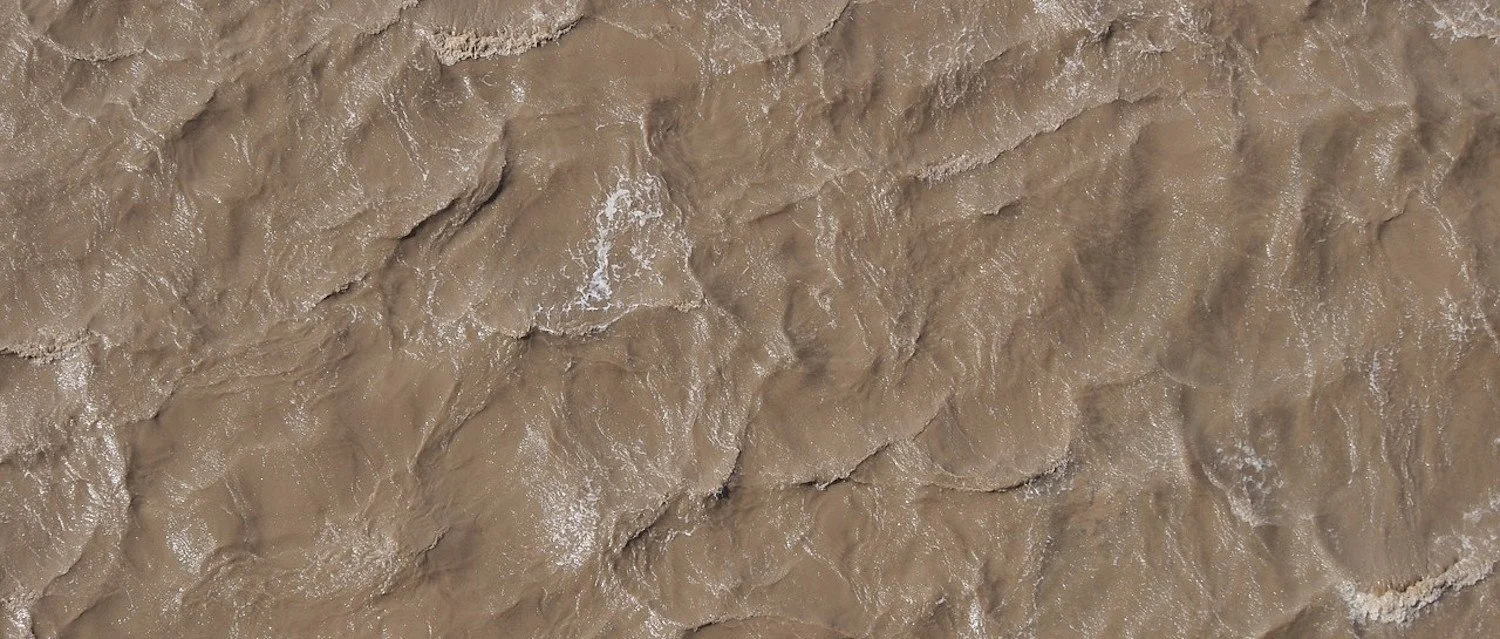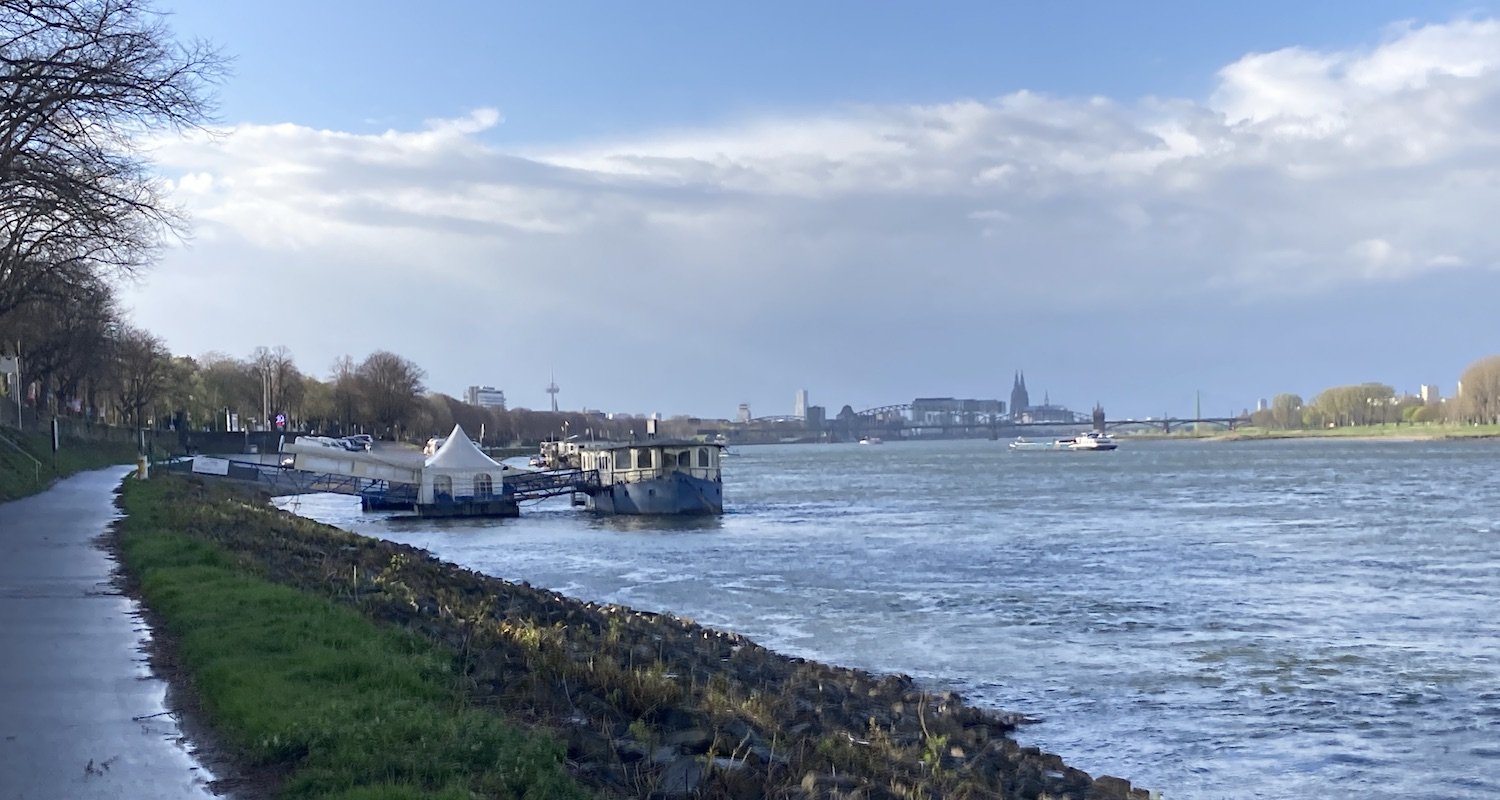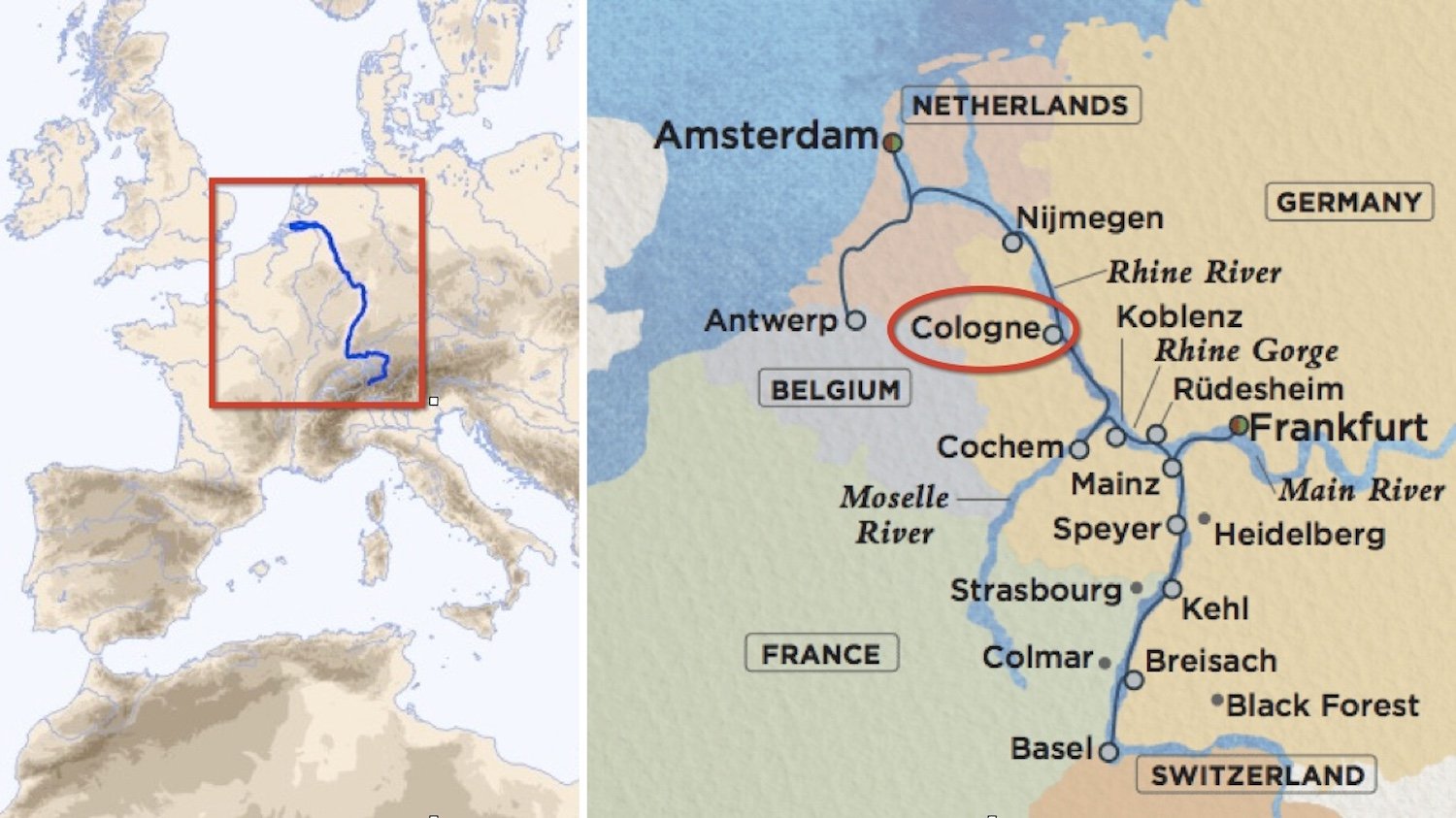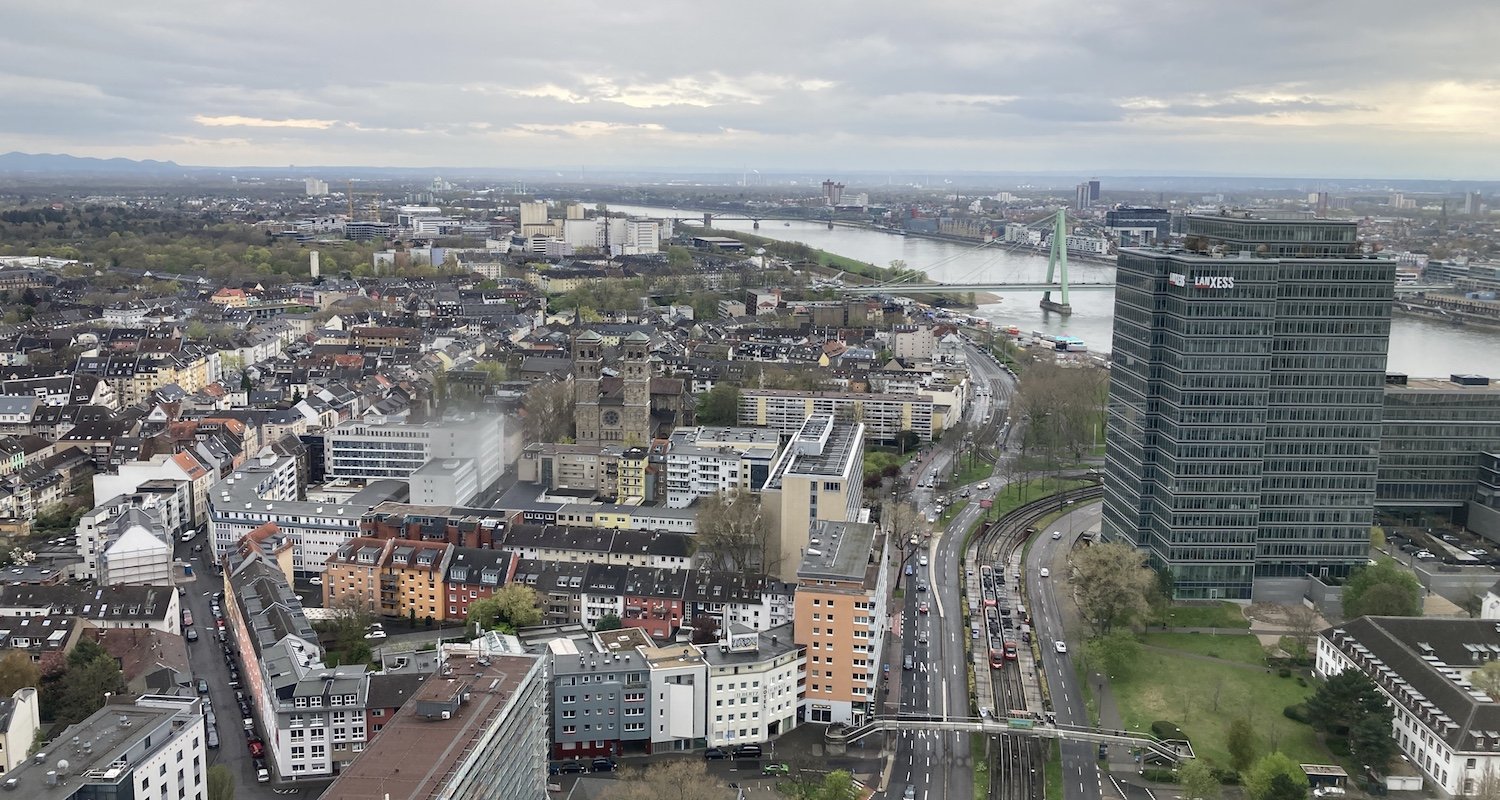We walked the asphalt trail. The earth smelled wet and looked smudgy. The sky was indecisive. In one moment the rain dropped and veered, its trajectory altered by gusts of wind. A moment later, the muslin drapes of the sky were pulled back and sunlight shot through. It ricocheted off the wet sheen and illuminated the droplets clinging to leafless branches of the trees (that undoubtedly provided marvelous colors or welcome shade along the riverbank in other seasons of the year). These droplets transformed into diamonds for an instant, then the drapes curled and closed. The dance was over as suddenly as it started.
Moriah had warned me to bring clothes. I was wearing my fleece under my raincoat. Springtime in Köln (or Cologne), Germany, is a fickle thing.
The Rhine River flows through Köln, Germany.
Above the trail, the bank rose steeply and was fortified in places. Walls of concrete and stacked stone held the riverbank and offered some protection to the houses and businesses above from the clawing current.
Moriah offered commentary. “A few weeks ago the water came up to here.” She pointed to a spot on the wall. “The whole trail was underwater.”
Below the trail was the source of that flood. The Rhine (Rhein, Rhin, or Rijn) charged north with considerable force. Today’s rain was relatively light. We could only imagine what might have fallen on the Black Forest upriver or in the Swiss Alps beyond that. The run of this 1,326-kilometer (or 824-mile) watercourse began somewhere in what Tacitus could only describe as a place of “precipitous and inaccessible height.”*
That mystery was revealed in 1785. Danubian Antiquarius describes a house on Mount Abnoba with two gutters. The runoff that gushed from one was the source of the Danube; the water that gushed from the other was the source of the Rhine.** The dwelling was well-placed, obviously.
The Rhine originates in Switzerland and runs through Germany and France, the Netherlands, and into to the North Sea. Image on the right is from https://www.euratlas.net/geography/europe/rivers/rhine.html (accessed 5/8/2022).
The Rhine has been dubbed by some “the most important river in Europe.”*** Those who float the Danube may fuss over such robust language, but without a doubt, the Rhine is a primary artery in the life and history of Germany. The relationship between modern cargo volumes and the economic health of the region is direct.
As Moriah and I chatted (and chattered!) a barge loaded with shipping containers struggled against the current. Its intensity was not measured by its speed—I think we could outwalk it—but by the throbbing of its engines. It was a labor more felt than heard.
We had a sense of it. Our family spent more than twenty years on the riverbank of the Ohio River. Tug and barge traffic was a thing in Northern Kentucky too. Köln as an old river town of mud and flood seemed somehow familiar. The Rhine is comparable in length to the Ohio as well, although the volume of discharge is much less, perhaps by two-thirds.
Traffic on the Rhine near Moriah’s apartment. Photograph by Peter Dohrn.
As one dedicated to the landscapes of the biblical world, the Rhine may appear to be even more remote. It is not mentioned in the biblical text at all. And yet, this river and its environs were familiar to many in the New Testament world, by word if not by experience.
The Rhenus—or “flow”— as the Rhine was known to the Latin-speaking Romans, ran along the edge of the Roman frontier. Stories about the “barbarian” tribes that lived on and beyond this river curled the nose-hairs of the more civilized Mediterraneans. These mentions are worth exploring.
View to the Rhine from the observation deck of the KölnTriangle building.
*Tacitus was a first-century AD Roman historian who offers many tidbits of interest (including an early extra-biblical mention of the crucifixion of Jesus). While there is much that is unknown about the north country in his day, Tacitus understands that “the Rhine springs from a precipitous and inaccessible height of the Rhætian Alps, bends slightly westward, and mingles with the Northern Ocean.” See his Germany and its Tribes, chapter 1. Text available at http://www.perseus.tufts.edu/hopper/text?doc=Perseus%3Atext%3A1999.02.0083%3Achapter%3D1 (accessed 5/9/2022).
**This and other wondrous details are revealed by Claudio Magris in his Danube (translated by Patrick Creagh. Farrar Straus Giroux, 1989): 27.
***See the article by Elisa Miebach in Bloomburg.com (U.S. Edition) “Germany Is Re-Engineering Europe’s Most Important River,” published 9/6/2020. The article is available online at https://www.bloomberg.com/news/features/2020-09-06/germany-is-re-engineering-the-rhine-europe-s-most-important-river (accessed 5/8/2022).
Reservations are now being received for our April 21-May 1, 2023 excursion to Greece. Bible Land Explorers will follow in Paul’s footsteps in the classical world, with stops at Thessaloniki, Amphipolis, Philippi, Neapoli (Kavala), Meteora, Delphi, Corinth, Mycenae, Epidaurus, and Sparta. Conclude this grand tour in Athens, the classical center of it all. Click here for the brochure. Early bird discounts apply. Direct all questions to BibleLandExplorer@gmail.com





